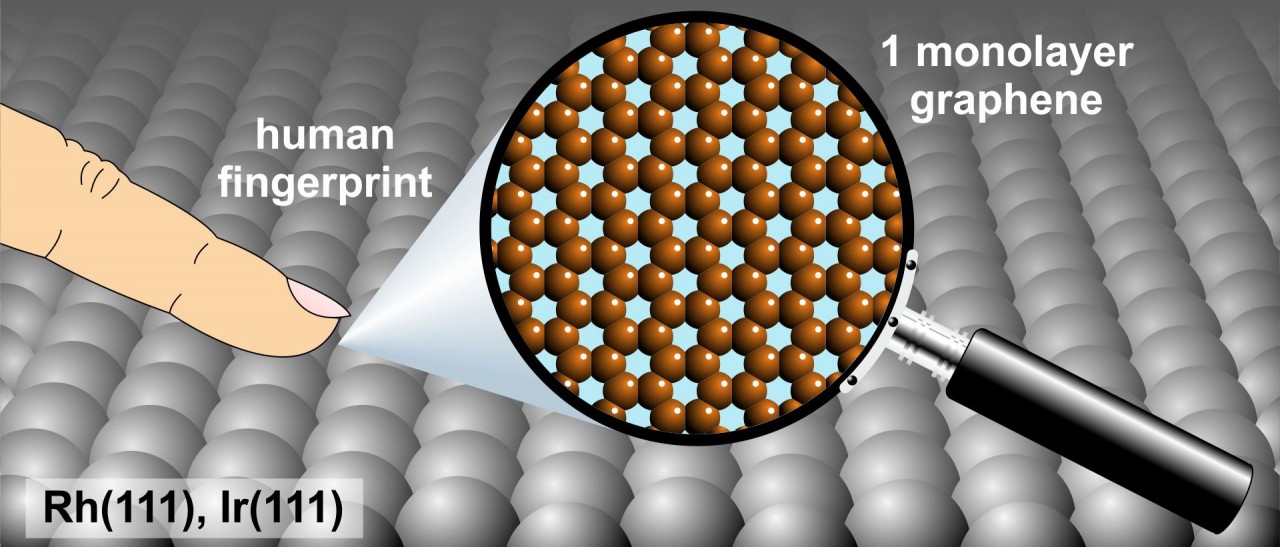Graphene from Fingerprints: Exhausting the Performance of Liquid Precursor Deposition

Epitaxial graphene is expected to be the only way to obtain large-area sheets of this two-dimensional material for applications on an industrial scale. So far, there are different recipes for epitaxial growth of graphene, using either intrinsic carbon, such as the selective desorption of silicon from a SiC surface, or extrinsic carbon, as via the chemical vapor deposition (CVD) of simple hydrocarbons on transition metal surfaces. In addition, even liquid precursor deposition (LPD) provides well-ordered graphene monolayers. It will be shown that graphene formation on transition metal surfaces by LPD synthesis is a very robust mechanism that even works if carbon is provided in a quite undefined way, namely by using a human fingerprint as a liquid precursor. Graphene growth from fingerprints provides well-ordered monolayers with the same quality as LPD grown graphene using ultrapure synthetic single precursors. The reliability of the self-assembly process of graphene growth on transition metals by LPD therefore offers a simple and extremely robust synthesis route for epitaxial graphene and may give access to production pathways for substrates for which the CVD method fails.

 Deutsche Version
Deutsche Version